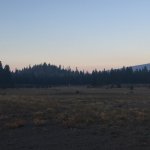I've been researching LRF's for some time now, and I have a possibly silly question that I'm sure some of you can answer.
What is the best reflective material for a LRF to read off of?
I ask because I understand beam divergence enough to know it's going to take a high quality unit ($$$) to range 66% IPSC targets at 1K and beyond. But, what if someone had a large reflective target that was transportable, for the sole purpose of just getting accurate range? I'm thinking a tri-fold presentation board covered in aluminum foil. Then someone could take something like the Kilo 2000 or the Bushy ConX ARC and at least get accurate range information to collect DOPE.
I understand this doesn't help hunters or PRS shooters, but for getting data and building accurate range cards, this seems like a way to get info without spending a ton of money.
Maybe this is an awful idea, but I'm curious regardless.
What is the best reflective material for a LRF to read off of?
I ask because I understand beam divergence enough to know it's going to take a high quality unit ($$$) to range 66% IPSC targets at 1K and beyond. But, what if someone had a large reflective target that was transportable, for the sole purpose of just getting accurate range? I'm thinking a tri-fold presentation board covered in aluminum foil. Then someone could take something like the Kilo 2000 or the Bushy ConX ARC and at least get accurate range information to collect DOPE.
I understand this doesn't help hunters or PRS shooters, but for getting data and building accurate range cards, this seems like a way to get info without spending a ton of money.
Maybe this is an awful idea, but I'm curious regardless.


